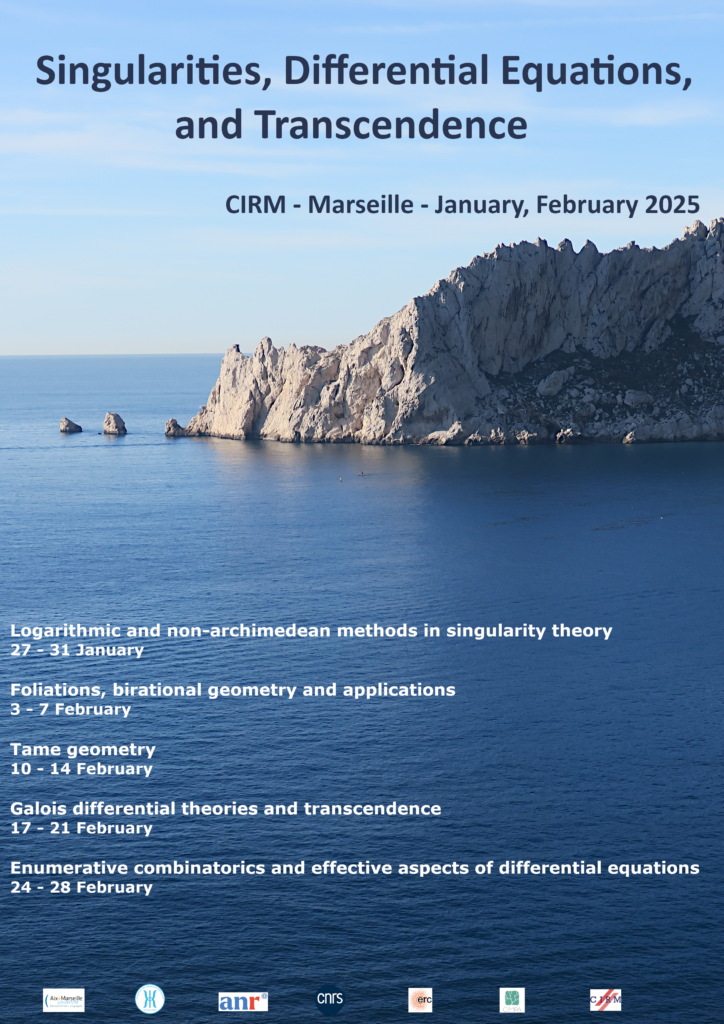CONFERENCE
Foliations, birational geometry and applications
Feuilletages, géométrie birationnelle et applications
3 – 7 February, 2025
Scientific Committee
Comité scientifique
Carolina Araujo (IMPA)
Paolo Cascini (Imperial College)
Charles Favre (Ecole Polytechnique)
Franck Loray (Université de Rennes)
Tamara Servi (Université Paris-Cité)
Organizing Committee
Comité d’organisation
Carolina Araujo (IMPA)
André Belotto da Silva (Université Paris-Cité)
Anne Pichon (Aix-Marseille Université)
Matteo Ruggiero (Université Paris-Cité)
In the past ten years, there has been a flourishing of new techniques and methods in between foliation theory, birational geometry and local dynamics. This includes the theory of MMP for foliations, which provides a new way to study local and global classical problems in foliation theory. Moreover, the development of methods of resolution of singularities of varieties via weighted blowings-up, some of which inspired by resolution of singularities of vector-fields, are important new tools in birational geometry. It is natural to explore how these methods would impact the study of resolution of singularities of foliations, a problem which is widely open in dimensions higher than 3. Finally, the duality between (formal) vector-fields and local dynamics provides a natural framework to explore complex dynamical systems. The Conference will explore these three inter-connected topics. We will bring together specialists of these three areas of expertise, in order to foster new collaborations and exchanges.
MINI-COURSES
Lorena López Hernanz (Université de la Alcala) Local dynamics of tangent to the identity biholomorphisms in dimension two
Calum Spicer (King’s College London) An introduction to the Minimal Model Program for foliations
SPEAKERS
Olivier Le Gal (Université Savoie Mont Blanc) Trajectories associated with formal invariant curves
Roberto Svaldi (University of Milan) Adjoint foliated structures
Michael Temkin (The Hebrew University of Jerusalem) Logarithmic and relative resolution of singularities
Sebastian Velazquez (King’s College London) The extension problem for codimension 1 foliations
SPONSORS



